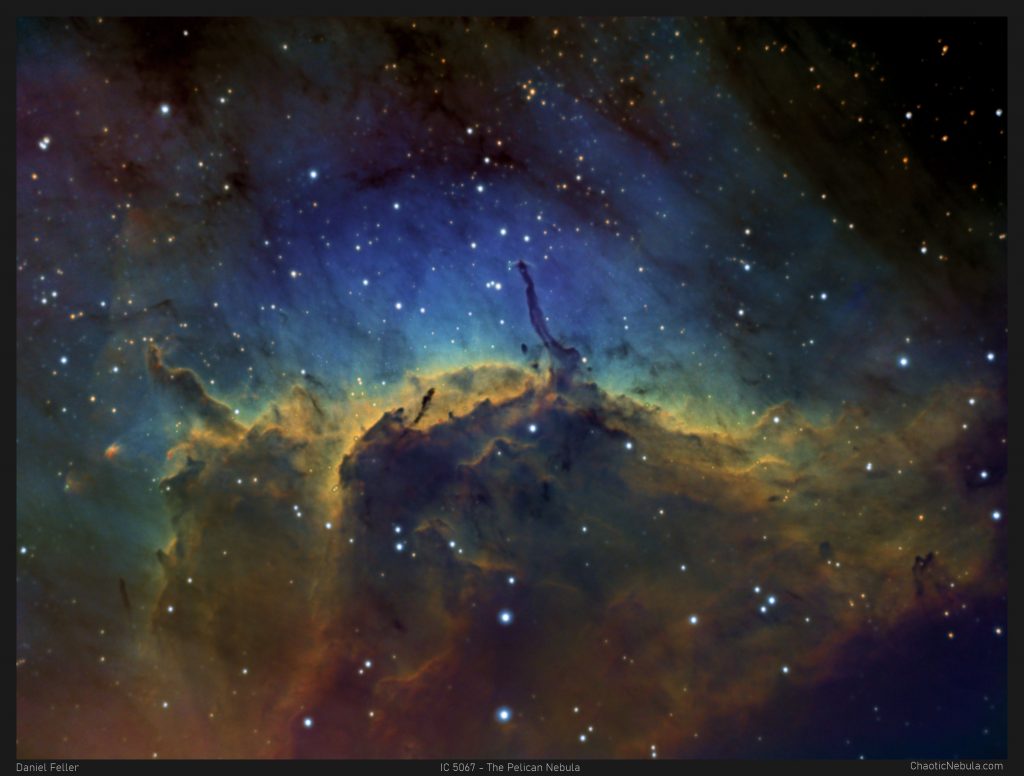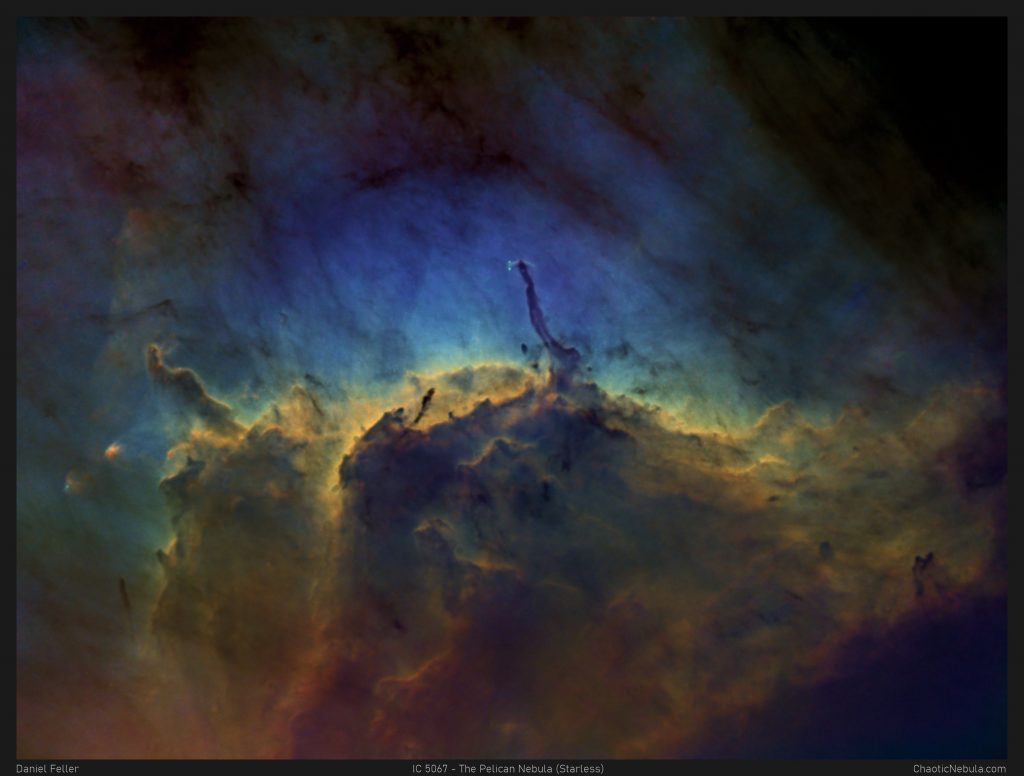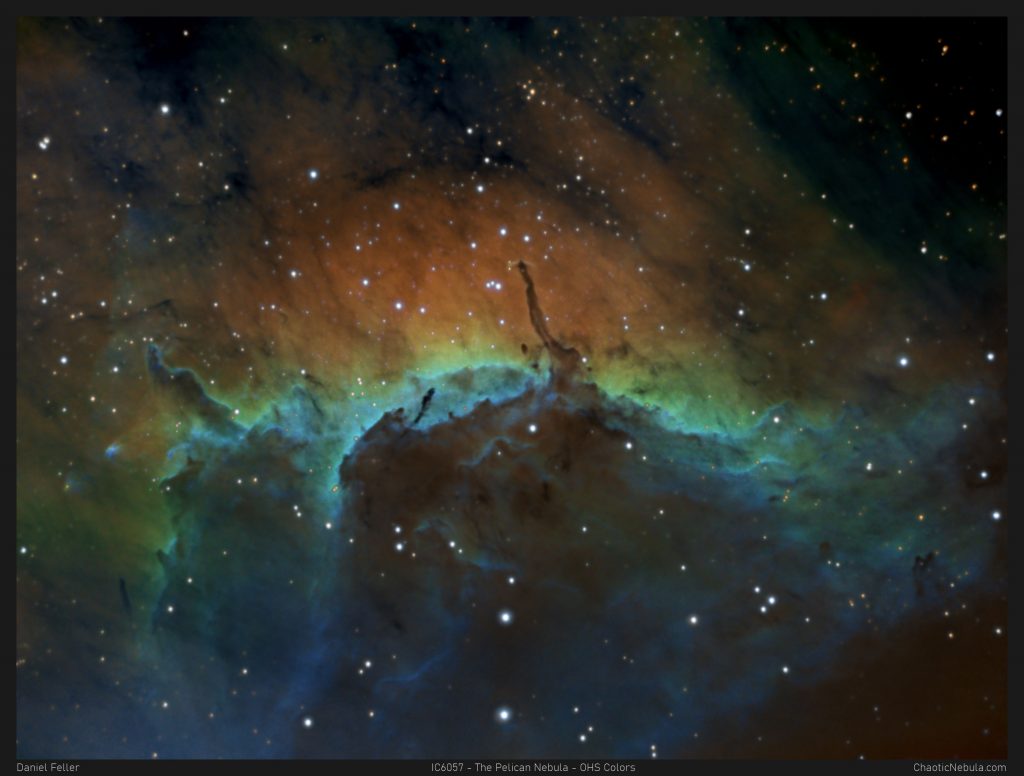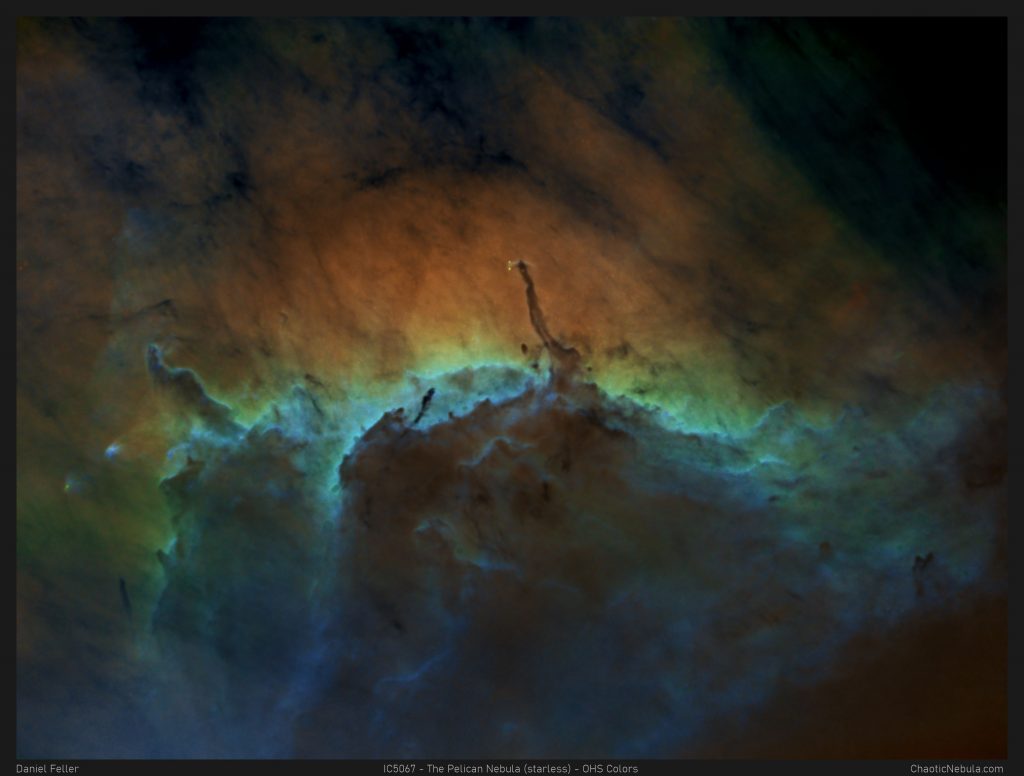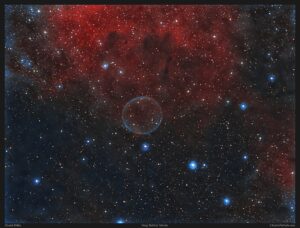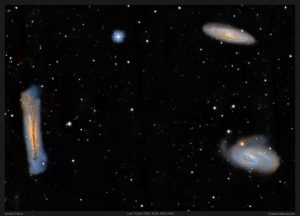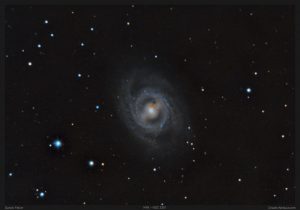The Pelican Nebula is an emission nebula within the constellation Cygnus, the Swan. The Pelican Nebula is identified as IC5070, but the prominent feature imaged below is a small portion, which is identified as IC5067.
The Pelican Nebula is an active star forming region, which helps to ionize the gasses, allowing for easier imaging through narrowband filters.
The Pelican Nebula is 1,800 light years away. This nebula is quite large. The image below is a single panel. In order to capture the entire nebula, I would need to create a mosaic 3 panels wide by 4 panels tall (12 panels total).
Imaging Details
- Workflow: Narrowband
- Sulfur-II: 60*600 seconds
- Hydrogen-Alpha: 51*600 seconds
- Oxygen-III: 60*600 seconds
- Binning: 1×1
- Color: SHO
- Red: Sulphur-II
- Green: Hydrogen-Alpha
- Blue: Oxygen-III
- Total Imaging Time: 28.5 hours
- Imaging Dates: (8 nights)
- 8/30/2021
- 9/1/2021
- 9/5/2021
- 9/7/2021
- 9/8/2021
- 9/9/2021
- 9/12/2021
- 9/14/2021
Colorization Option
The standard colorization of narrowband images is the Hubble Pallet, refereed to as SHO (Sulphur = Red, Hydrogen = Green, and Oxygen = Blue). However, sometimes the images takes on a whole new experience when the colors are modified or even reversed. Compare the SHO images with the inverse OHS images (Oxygen = Red, Hydrogen = Green, and Sulphur = Blue).
Location
From northern latitudes, The Pelican Nebula is located very high in the sky, making it an ideal target to image. Ideally, those looking to image the Pelican Nebula should plan for the months of June through October. During that time, the nebula appears highest from the horizon.

Imaging Notes
Some quick tips about imaging The Pelican Nebula
- Star Removal: This time, I tried to figure out the best time to remove stars. After a few trials, I identified removal after deconvolution provided the best result.
- Star Integration: I’ve notice that if I remove stars early on, the finished image (with stars added back in), results in my stars being smaller and tighter. Processing images with stars still present often results in stellar bloat. I think moving forward, I will opt for removing stars to help keep the stars small and tight.
- Sulphur-II: There is a strong SII signal in the Pelican Nebula. In order to capture enough signal, thereby helping to reduce noise, I captured 10 hours worth of data (60 images at 10 minutes each). The final, integrated Sulphur-II image had minimal amounts of noise.
- Oxygen-III: There is a decent OIII signal in the Pelican Nebula. Because this filter will help the nice blue area, it is advisable to take a lot of OIII images to help reduce noise. This image, just like Sulphur, was comprised of 10 hours of data.
- Data: I’m realizing that it is better to spend more time on fewer objects than trying to image as many objects as possible. I believe having 10 hours of data for each narrowband filter provides a great end result, with strong signal and little noise. The images below are immediately after image integration. Notice the little amount of noise present in each image. This is because each filter has 10 hours of data.
